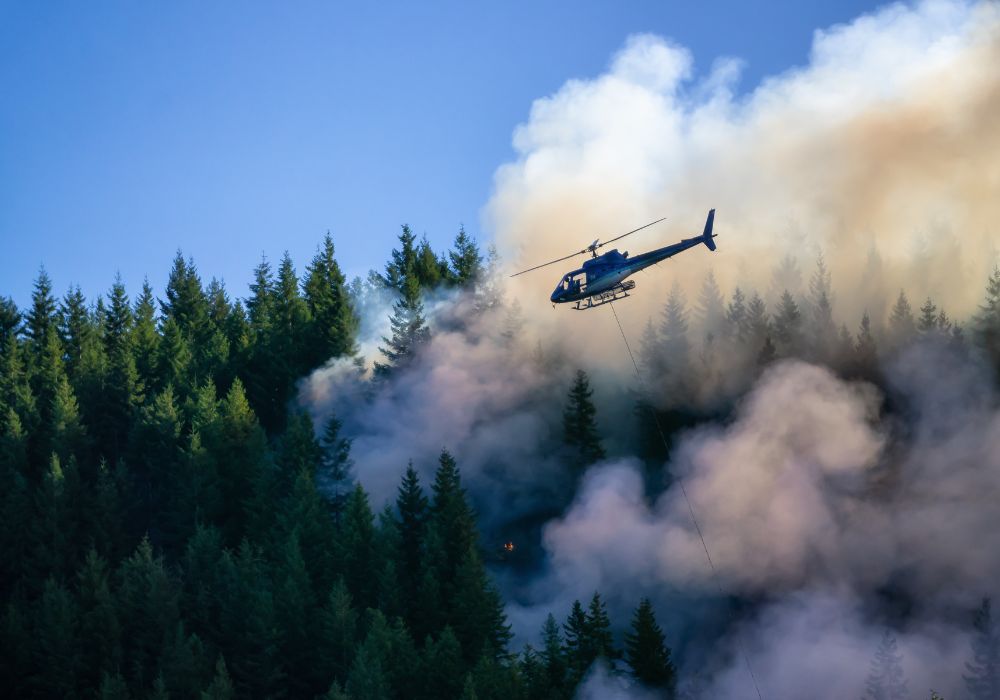A first-of-its-kind report has found that carbon dioxide generated by wildfires leapt 16% above average last year, driven by emissions from Canadian boreal forests that were nine times the historical average.
The report, published this week in the journal Earth System Science Data, shed light on the impact of global wildfires that are increasing in ferocity and frequency. It looked at several “high impact” wildfire events in Canada, Greece, the western Amazon region and northern parts of South America between March 2023 and February 2024. While the geographic territory burned was slightly below the average of previous years, at a total of 3.9 million square kilometres, fire carbon emissions climbed to 8.6 billion tonnes of carbon dioxide, the study found.
The discrepancy is largely due to record-breaking emissions in Canadian boreal forests, the authors of the landmark State of Wildfires report note. “By the end of the century, events of similar magnitude to 2023 in Canada are projected to occur 6.3–10.8 times more frequently under a medium–high emission scenario,” the authors write.
Last year saw record-breaking fires around the globe. In Canada, severe drought conditions and high amounts of dry fuels caused 150,000 square kilometres – the size of the state of Illinois – to burn, forcing the evacuation of 232,000 people. Similar conditions led Greece to see an unprecedented level of wildfires, with around 900 square kilometres burned. Other places bore a major human toll, with more than 100 people losing their lives in Hawaii, when fires devastated Maui in August, and 131 in Chile.
“In Canada and Greece, a mix of severe fire weather and plenty of dry vegetation reinforced one another to drive a major uptick in the number and extent of fires last year,” Francesca Di Giuseppe, a senior scientist at the European Centre for Medium-Range Weather Forecasts, said in a statement. “But our analysis also shows that factors such as suppression and landscape fragmentation related to human activities likely played important roles in limiting the final extent of the burned areas.”
RELATED:
- The fire beast is everywhere. A checklist for fighting back.
- My clear-sky reflections on living with B.C.‘s smoke and wildfire
- Tree planting in the face of wildfires
With growing emissions came worsening air quality. The study found that the concentration of aerosols, chemical species and greenhouse gases exceeded the recommended limits in many regions of Canada and the United States at peak wildfire moments. People living in more than half of U.S. states experienced up to two weeks of excessive exposure. “The biggest impacts on air quality were experienced close to the fires, particularly in western and northwestern Canada and in Quebec in the east of the country,” the Copernicus Atmosphere Monitoring Service (CAMS), a climate arm of the European Union, said in a statement. CAMS provided data for the State of Wildfires report.
The evidence continues to point to climate change playing a role in more severe fire conditions, although the impact of humans on the specific landscape varied. In some cases, the area burned by fires would have been greater if it had not been altered by people. Agriculture and forestry activity can reduce the density of vegetation, as they do in Canada and Greece, but in places like the Amazon, they create fuel that exacerbates fires, CAMS researchers said. The probability of experiencing high fire weather has increased significantly as a result of human influence, the report authors write, with an estimated 2.9- to 3.6-fold increase in Canada last year and a 20- to 28-fold increase in Amazonia.
As residents of Jasper, Alberta, return to what is left of their mountain community after wildfires forced evacuations last month, researchers say that they hope their report provides crucial insights that help build resilience against future wildfires, and make us all better prepared for what may come.







